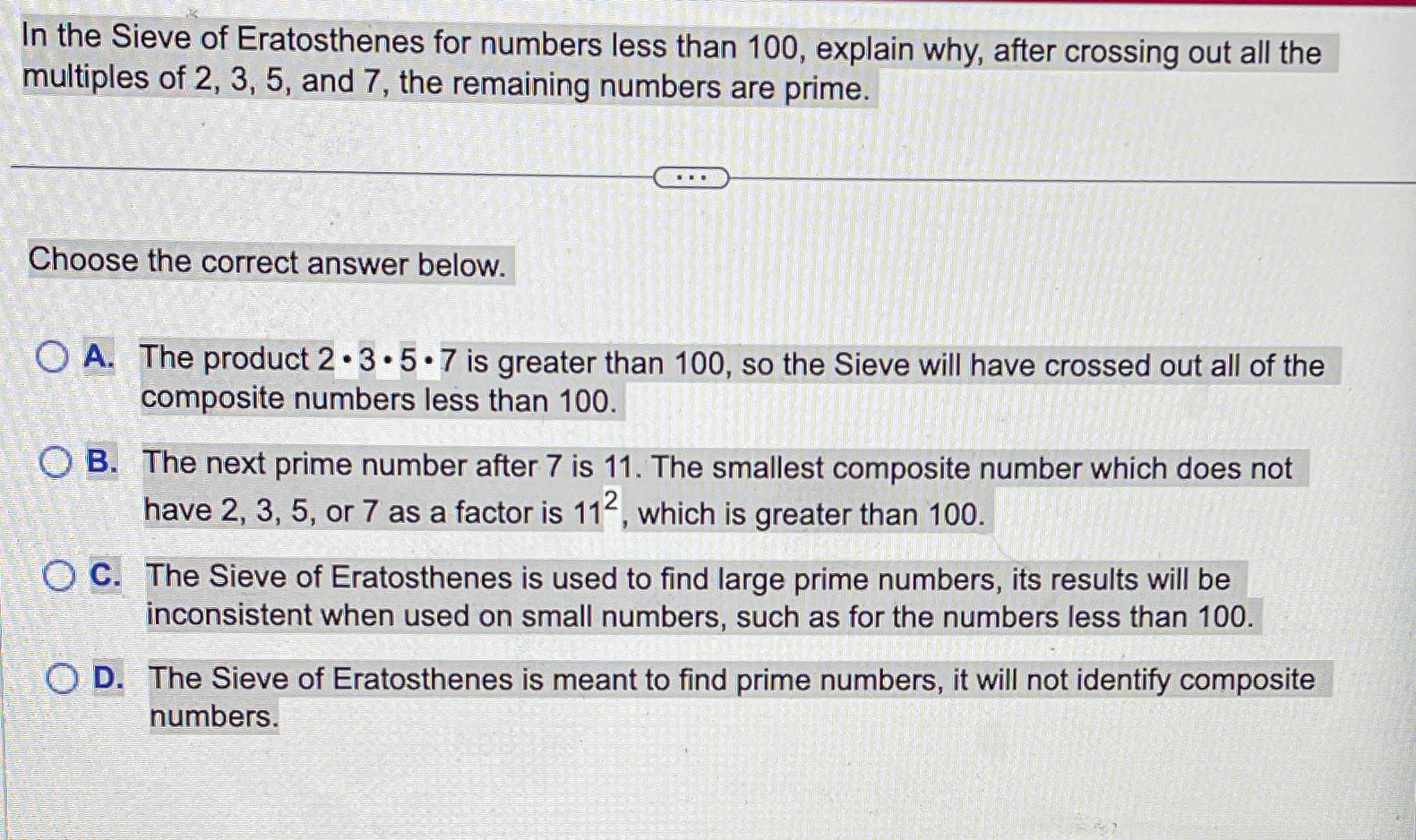Question
In the Sieve of Eratosthenes for numbers less than 100, explain why, after crossing out all the multiples of 2, 3, 5, and 7,

In the Sieve of Eratosthenes for numbers less than 100, explain why, after crossing out all the multiples of 2, 3, 5, and 7, the remaining numbers are prime. Choose the correct answer below. OA. The product 2.3.5.7 is greater than 100, so the Sieve will have crossed out all of the composite numbers less than 100. OB. The next prime number after 7 is 11. The smallest composite number which does not have 2, 3, 5, or 7 as a factor is 112, which is greater than 100. OC. The Sieve of Eratosthenes is used to find large prime numbers, its results will be inconsistent when used on small numbers, such as for the numbers less than 100. OD. The Sieve of Eratosthenes is meant to find prime numbers, it will not identify composite numbers.
Step by Step Solution
There are 3 Steps involved in it
Step: 1

Get Instant Access to Expert-Tailored Solutions
See step-by-step solutions with expert insights and AI powered tools for academic success
Step: 2

Step: 3

Ace Your Homework with AI
Get the answers you need in no time with our AI-driven, step-by-step assistance
Get StartedRecommended Textbook for
Data Structures and Algorithm Analysis in Java
Authors: Mark A. Weiss
3rd edition
132576279, 978-0132576277
Students also viewed these Algorithms questions
Question
Answered: 1 week ago
Question
Answered: 1 week ago
Question
Answered: 1 week ago
Question
Answered: 1 week ago
Question
Answered: 1 week ago
Question
Answered: 1 week ago
Question
Answered: 1 week ago
Question
Answered: 1 week ago
Question
Answered: 1 week ago
Question
Answered: 1 week ago
Question
Answered: 1 week ago
Question
Answered: 1 week ago
Question
Answered: 1 week ago
Question
Answered: 1 week ago
Question
Answered: 1 week ago
Question
Answered: 1 week ago
Question
Answered: 1 week ago
Question
Answered: 1 week ago
Question
Answered: 1 week ago
Question
Answered: 1 week ago
Question
Answered: 1 week ago
Question
Answered: 1 week ago
View Answer in SolutionInn App



